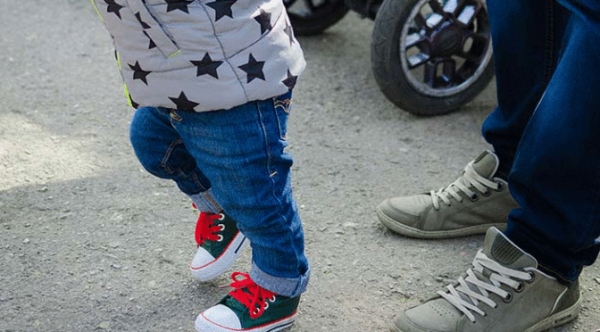Have you ever noticed that your child walks with their feet turned inward? Does this worry you? It is possible that your child has pigeon toe. But before you start stressing out with worry, here are some things that you need to know about pigeon toe and what might be causing the problem.
What is Pigeon Toe?
Pigeon toe (also known as in-toeing, false clubfoot, in-toe gait, metatarsus adductus, or metatarsus varus) is a condition that causes the toes to point inward. This condition is common in infants and young children. If your child is pigeon toed, it doesn’t mean that there’s something wrong with their feet, and it is not necessarily a problem. The term merely refers to the way the toes point when walking.
Pigeon toe isn’t painful of bothersome, nor is it known to cause other medical problems such as arthritis. Some of the symptoms of pigeon toe are:
- Feet pointed inward (as if the toes are touching)
- Stumbling (severe cases)
- Clumsiness
Causes of Pigeon Toe
Pigeon toe can have a few different causes that are normal variations in the way the legs and feet line up. The three conditions that can cause pigeon toe are: metatarsus adductus, tibial torsion, and femoral anteversion.
Metatarsus Adductus
This occurs when the foot tends to resemble a kidney, or when the metatarsus adductus has an inward curve at the outer edge of the foot.
If your child has this condition, you will probably notice it while they’re still a baby. Sometimes your doctor might try braces or special shoes while the child is still a baby (six to nine months old) to help the bones grow straight.
This condition will not clear up on its own. It requires treatment which will vary depending on whether the condition is flexible or fixed. Most flexible cases respond well to passive stretching, bracing, or specialized shoes, where as fixed types require serial plaster casting (casts on the feet and lower legs that are usually put on before the child is eight months of age).
If the treatment for flexible cases doesn’t work, then your child will be re-evaluated to make sure that they don’t have club-foot instead of metatarsus adductus. Surgical correction may be necessary, especially in cases of club-foot.
Tibial Torsion
This occurs when there is an inward twist of the tibia (shin) bone. This is commonly seen in children learning to walk (under two years of age).
Even with the twisted shin bone, the knees will still point straight ahead. This condition may be a result of the baby’s position in the mother’s womb before being born.
Usually the leg will straighten out within the first year of life as the baby starts pulling up and standing, but some children may continue to walk pigeon-toed until the leg bone is done growing. Surgery may be necessary for children who don’t outgrow this condition by the age of 10.
Femoral Anteversion
This occurs when there is an inward twist at the upper thighbone. The kneecap tends to point inward when the child is walking.
Most children show this form of pigeon toe between the ages of two and four, after they have begun walking. Children with a twisted thigh bone often sit with their legs crossed, and the best way to treat this condition is to have them sit in a chair with their legs uncrossed. This condition usually clears up by itself, but it may take one to three years for the thigh bone to straighten. Generally, a child will outgrow this condition by age eight.
Treating Pigeon Toe with Exercise
While pigeon toe usually corrects itself as the hip bones strengthen, there is a chance that, in some young children, the hip bones may remain weak or the shin bones of the lower legs might turn in. Treatments for this may include physiotherapy, with exercises such as:
- Have your toddler or young child sit up straight in a child-size firm chair. Help your child sit in the chair with their legs uncrossed and feet flat on the floor. Trace your child’s feet in the correct slightly outward position onto a piece of paper and have your child sit in the chair with their feet in the outlines. Continue this exercise daily until the condition is corrected.
- Teach your toddler or young child to walk backward. Clear an area of about six square feet in your living room or backyard to avoid injuries. Continue this exercise for up to 10 to 20 minutes or as long as your child is able to do so. This exercise will help strengthen your child’s hip joints. Repeat this exercise regularly during play and walking time.
- Make a low walking beam for your child to walk on. Place the board of wood on two square pieces of wood or two bricks. Keep the plank three to five inches off the ground to avoid injury due to falling. Help your child walk across the plank two to four times a day and continue this exercise regularly until their walking is normal. This exercise helps the child place one foot in front of the other correctly, and strengthens the muscles that keep the hip and shin bones aligned.
Book a Consultation
Before you try to diagnosis your child’s pigeon toe on your own, you should make an appointment with a qualified podiatrist. Book a consultation with Dr. Vikki and Dr. Connie today so that they can help you figure out the right treatment plan for your child’s pigeon toe.

